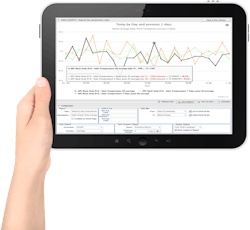Getting the data is never the issue anymore. A range of emerging digitization tools have made data collection a snap in today’s manufacturing world. The real trick is leveraging that data to enhance your company’s operations and make smarter decisions. The latest digitalization solutions are allowing companies to do just that — and in record time.
“Industry 4.0 and smart manufacturing are top of mind for pharmaceutical manufacturing,” says Terrance Holbrook, senior product manager at MasterControl. “This new wave of connected digital technologies offers pharma manufacturers unprecedented levels of data-driven insights, efficiency, optimization, product quality and productivity.”
As the digital transformation continues to sweep through the industry, vendors are creating new solutions that help manufacturers get the most out of their technology investments.
“Analysis and data play strong roles in the pharmaceutical industry, along with capturing new ways to collect relevant data to see how each step of the creation process affects the drug, all while keeping equipment running at peak efficiency, because any downtime could be disastrous,” says Sean Gately, vice president-business development, AI, IoT at Modius Inc.
Here’s a look at some of the ways these solutions are revolutionizing how manufacturers do business.
Reducing Digital Complexity
Putting the right systems in place to both collect and utilize useful data is often stalled by the complexity involved in updating older equipment.
“Many pharma machines are custom fitted and require new data and new analysis as they go outside the scope of the original manufacturer’s design,” Gately explains.
One way to overcome this hurdle is to look at bundled or end-to-end solutions that come with pre-configured hardware, software and services. Such solutions help users find value in machine management and monitoring quicker. Modius’ OpenData system is one bundled solution that overcomes the connectivity issue while normalizing massive amounts of machine data to predict and prevent outages in real-time on the factory floor, while also reducing energy costs.
“OpenData’s machine learning at the edge allows pharma to see problems before they happen, analyzing millions of points of data over time to see core deviations that allow the platform to issue warnings and recommendations to maintenance crews before a stoppage goes into effect, reducing downtime and increasing worker efficiency,” Gately says.
Scrapping the Paper
“With many different types of [digitization tools] on the market and given their significant functional overlap — and more importantly, their functional gaps — it can be challenging to select the right system for the right job,” Holbrook says.
These issues help explain why many pharma companies — including successful companies with highly innovative products — are still using outdated paper-based processes to track parts of their operations. But this puts manufacturers at risks for a range of problems and delays.
“Many pharmaceutical and other life science companies continue to rely on manual, paper-based systems to maintain their batch records. Such systems often fall short, exposing these organizations to inefficient production record processes, poor data tracking, and inaccurate or missing information, all while delaying shipping times as product sits in the warehouse waiting for paperwork to be completed,” Holbrook says.
This month, MasterControl is releasing a new solution that allows manufacturers to ditch paper-based tracking with batch record keeping. As part of the company’s Manufacturing Excellence line, the Electronic Batch Records system automates batch production records, which Holbrook says will improve performance, equipment effectiveness and time-to-ship.
Supply Chain Solutions
New regulations associated with the Drug Supply Chain Security Act will require that pharma companies enhance their traceability and supply chain tracking — and new digitalization tools are key to compliance. But the mandates also give companies an opportunity to make use of the new data these tools generate.
“It’s going beyond mandates and into a space where businesses are doing it because it truly improves their protocols and processes, which carries the dual benefit on an internal boost and a selling point to customers,” says Julien Faury, vice president of operations at Adents.
“With pharmaceutical manufacturers, CMOs and CPOs required to track, store and report an increasing amount of data, it only makes sound business sense to put this data back to work to improve production and supply chain practices,” echoes Evren Ozkaya, CEO of Supply Chain Wizard.
Adents’s NovaTrack platform, which can be applied to a comprehensive pharmaceutical supply chain scenario, addresses this need by allowing manufacturers to digitize, track and improve the use of the data throughout their entire supply chain.
Supply Chain Wizard also provides solutions that use the metrics generated to comply with serialization mandates to funnel data into user-friendly dashboards, so that managers can see potential weak points and make adjustments accordingly.
“In addition to monitoring the performing of production and packaging, our digital factory solutions allow for informed, data-driven decision-making concerning workforce and labor costs, optimized job scheduling for reduced equipment downtime, and smart reporting capabilities that all but eliminate the possibility of human-based error,” Ozkaya says.
[javascriptSnippet]




